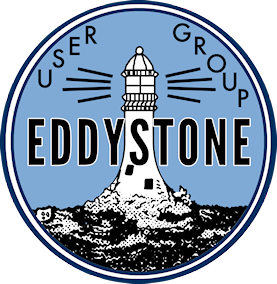EUG Member’s Survey 2006
The EUG carried out a couple of survey’s of members sets in 1998 and 2001. James de la Mare carried out a final survey in the last issue of the EUG Lighthouse newsletter and his results are presented here.
EUG Survey of Eddystone Models Owned by Members (download survey)
FINAL FIGURES
In the final issue of Lighthouse (April newsletter No. 96) EUG members were invited to participate in the third and final survey of their preserved Eddystone radios and accessories . Previous surveys had been taken in 1998 and 2001. Survey returns have continued to arrive long after April and an interim list was compiled at the end of May and uploaded to the web site in June. Many returns came from overseas countries
First, we repeat, our warm thanks to all those EUGers who have sent in their carefully informative returns, and specially to those who included kind messages about the EUG.
We can now set out the final results of the survey with an analysis of the figures. We have included the S (specification) numbers on this occasion where known, whichgives some indication of the sequence of planning and production. Some sets clearly took longer to reach production stage than others; the 958 came out after the 960, for example.
Following previous surveys, the results of this are in five parts
- Pre war sets and accessories
- Wartime sets
III. Post War Valve sets
- Solid state sets and
- Miscellaneous accessories (not included in the first survey)
Where known we have included the manufactured quantity, but see the note at the end.
Some sets were made for and bodged by Marconi or a subsidiary and these are shown with the basic Eddystone set. Overall the survey results can best be followed in conjunction with the 2005 edition of the EUG QRG (Quick Reference Guide).
Many sets change hands during the year through e-bay or privately and, while sets will have been bought and sold during the course of compiling these figures, we have taken care not to include any sets more than once. One has to assume these surveys are roughly representatives of the types and numbers owned by a wider public. As we noted when giving the interim figures, there are believed to be some large collections whose owners have not participated in our members’ surveys.
This survey therefore represents the 67 returns received in 2006. In 1998 we had 63 returns and in 2001 we had 120 although curiously the total number of sets did not increase proportionately. In 2006 however there was a large increase, giving an indication of the number of sets in circulation and finding a home with EUG members
James de la Mare
December 2006
